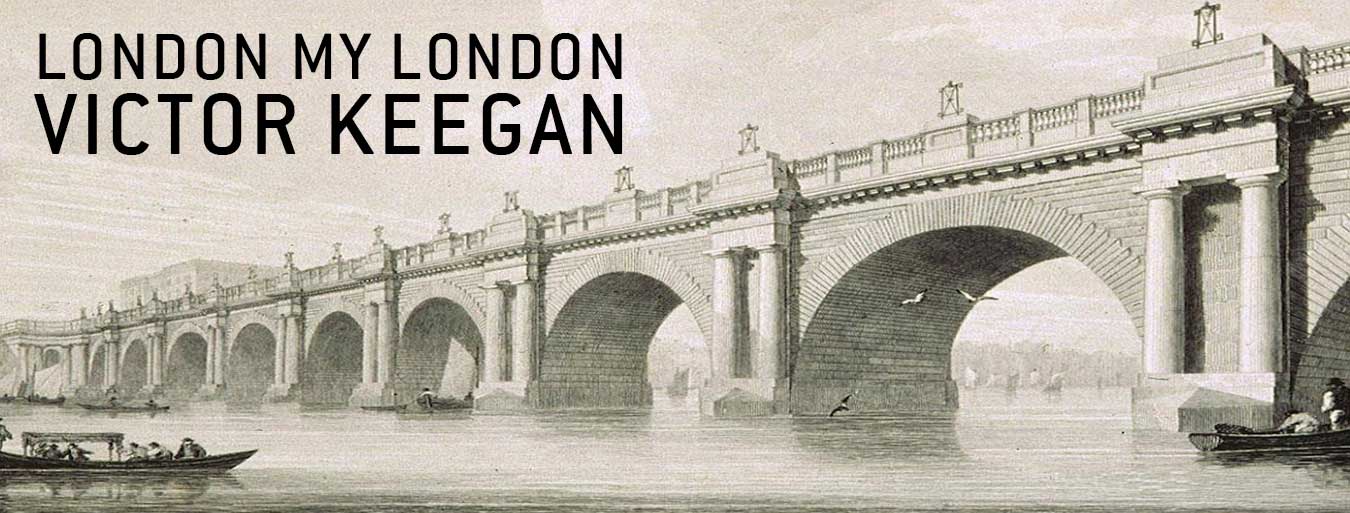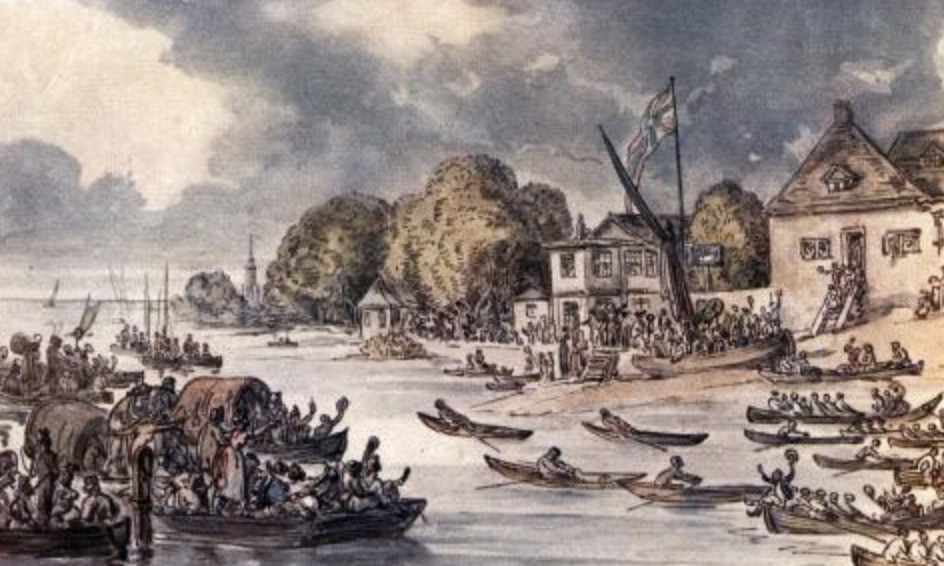Secret London History – London Bridge – the world’s most successful monopoly
An early run of the Doggett’s rowing race
.
.
.
.
.
.
.
.
.
.
.
.
IN JULY apprentices from the Watermen’s gild race from London Bridge to Cadogan Pier in Chelsea, passing under eleven bridges. It is called Doggett’s and is claimed to be the longest running continuous rowing race ever. There is a fascinating irony because if the watermen had had their way centuries ago there would be no bridges to pass under.
Not to put too fine a point on it they were a key part of what must be one of the most successful monopolies of all time. Together with the City of London and the Church (in the form of the Archbishop of Canterbury) they succeeded in stopping any new bridges being built for over 600 hundred years. Opposition had been going on for centuries before but their power was greatly increased in 1510 when Henry Vlll granted the watermen a monopoly of conveyance on the Thames. This helped them stop any new crossings from being built until 1750 when Westminster Bridge was built. From Roman times until 1750 London had only only one crossing – the famous London Bridge with all those houses built on top. It was the first stone bridge of any size in the world.
All three members of this unholy “ triple alliance“ were united by one thing. Money. The Corporation of London controlled London Bridge and the lucrative tolls extracted from passengers crossing the bridge. The original bridge was such a good investment that it is still earning dividends today. Further upriver at Lambeth Palace the Archbishop had a nice little earner from the fees charged for the horse ferry the Church operated. The road to Lambeth Bridge from Victoria is still called Horseferry Road.
The main losers from a new bridge, would have been the “wherrymen“ who conveyed passengers across the river to the theatres and other entertainments on the south bank and also along the river from Deptford to Westminster. There were estimated to be 20,000 of them in London, a huge proportion of the population which was less than 200,000. The wherrymen were of course right. If new bridges had been built they would undoubtably have lost their jobs.
You can imagine the confusion at the time if you had to catch the attention of thousands of wherrymen often foul-mouthed and badly trained, offering competing fees in order to attract custom. Samuel Pepys couldn’t stand them but they must have been the biggest employers in London by a distance.
Such was the power of the watermen that they even succeeded in stopping Hackney carriages from being used in London for two years during the reign of James l. The equivalent of this cartel today would be if Britain’s biggest union, Unite, joined forces with the City of London and the Church of England to keep cars off the roads. Not even remotely possible.
Watermen still exist today on a greatly reduced scale than before but much more highly trained through a five-year apprenticeship. If you walk down the little travelled thoroughfare of St Mary at Hill in the City of London you could easily pass by without noticing the Watermen’s Hall. Today it is a flourishing gild which, unlike so many livery companies which have little connection to their historic roots, is still intimately involved with the River Thames through activitiies ranging from training programmes to organising events like the Doggett’s race and the annual swan upping ritual which monitors swans along the reach of the Thames.

